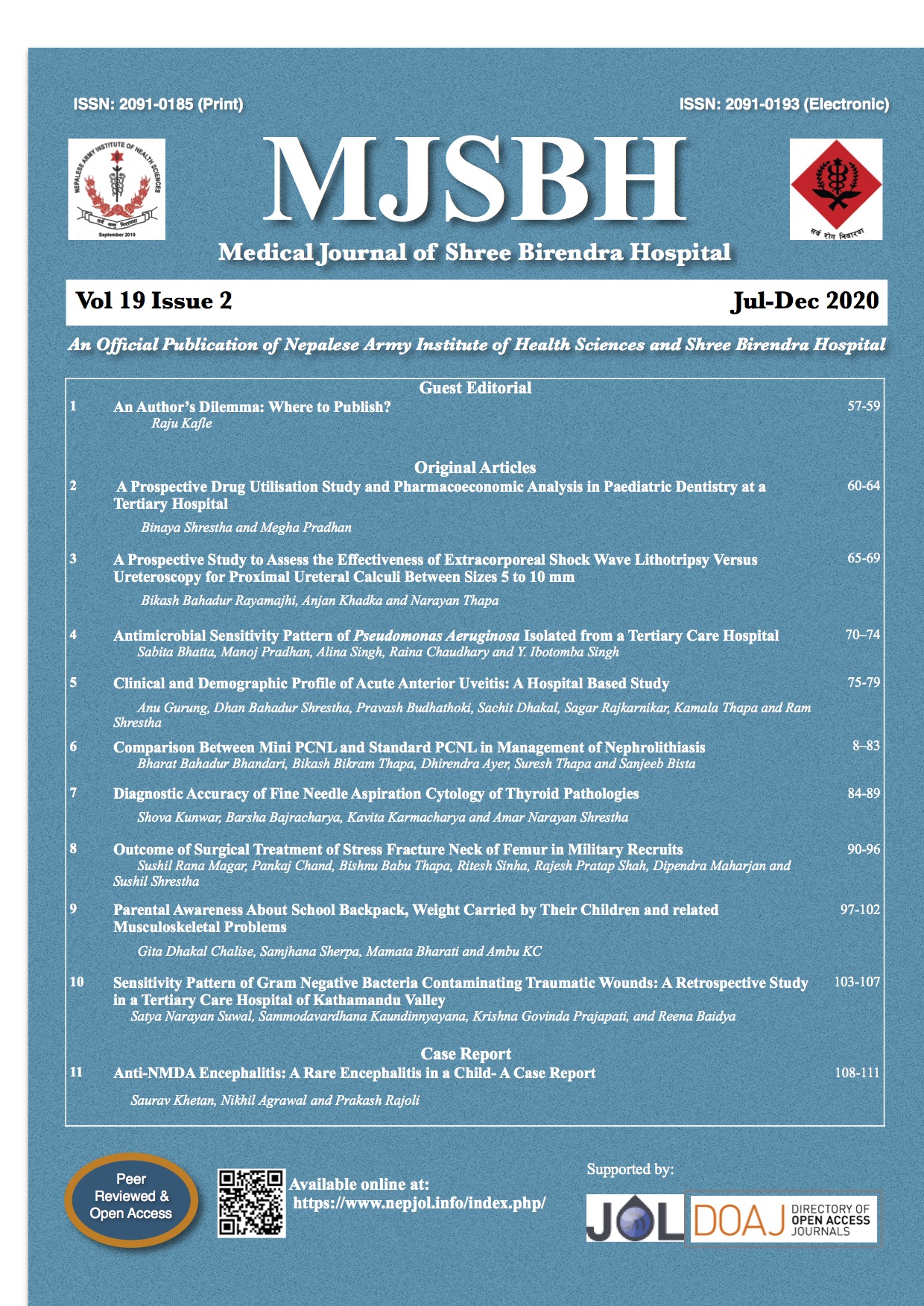Antimicrobial Sensitivity Pattern of Pseudomonas Aeruginosa Isolated from a Tertiary Care Hospital
Keywords:
antimicrobial sensitivity, multidrug resistant, Pseudomonas aeruginosaAbstract
Introduction: Pseudomonas aeruginosa (P. aeruginosa) is one of the major cause of nosocomial infection. Multi-drug-resistant P. aeruginosa (MDR PA) are increasingly encountered in clinical samples .Therefore, this study was undertaken to know the sensitivity pattern of P. aeruginosa and to detect MDR PA from clinical samples.
Methods: This was a laboratory based retrospective-cross sectional study conducted at Department of Microbiology at a tertiary care referral centre in Kathmandu, Nepal from December 2018 to December 2019. Total of 200 isolates of P. aeruginosa were isolated from clinical samples. Non repetitive sample per patient was included in the study. Samples were processed according to standard methodology and antimicrobial sensitivity testing (AMST) was carried out by Modified Kirby Bauer disk diffusion test as per Clinical Laboratory Standard Institute guideline. MDR was defined as strains resistant to one or more agent of ≥ 3 groups of antimicrobial categories.
Results: Highest number of P. aeruginosa were isolated from sputum (93), followed by wound swab (35), and pus (29). AMST revealed the most sensitive drug to be Amikacin (91.51%) followed by Meropenem (78.5%) and Piperacillin/Tazobactam (77.50%). Out of 200 isolates, 69 (34.5%) were MDRPA.
Conclusions: The information regarding sensitivity pattern of P. aeruginosa will help clinicians to choose most effective antimicrobials for the treatment of patients thus saving the time duration and total cost of patient management and also it will play a key role in setting antimicrobial stewardship policy.
Downloads
Downloads
Published
How to Cite
Issue
Section
License
This license enables reusers to distribute, remix, adapt, and build upon the material in any medium or format for noncommercial purposes only, and only so long as attribution is given to the creator.




